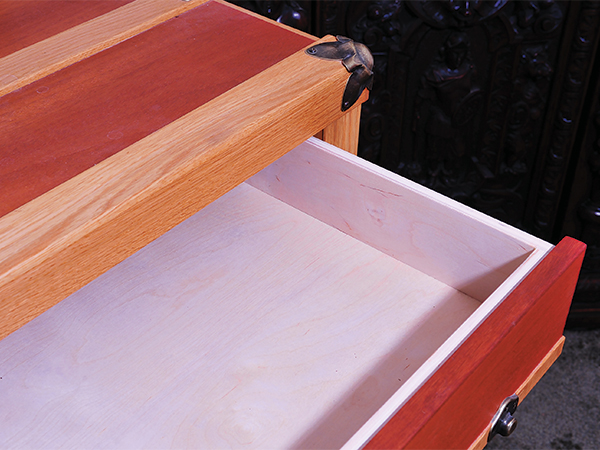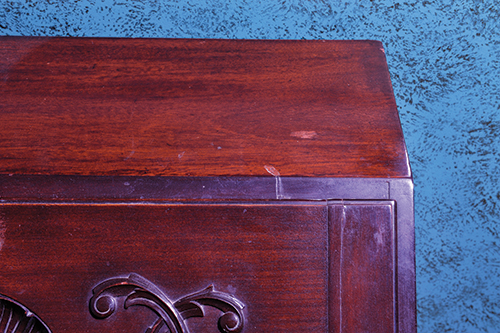
I am planning on using shellac on cherry wood (not curly) in the near future. I will use a “clear/bleached” shellac, and I want to preserve as much of the natural look of the new cherry as possible. I will let it age on its own. Should I worry about blotching, or are there any other things that I should be concerned with for this combination of wood and finish?

The cherry piece is a dresser with drawers. The Internet tells me that using oil-based finishes will give off fumes for a long time. This is why I was going to use shellac, but if there is another product that could be used on the inside of drawers without fumes and would not discolor the cherry, I would be open to trying something else.
– R. Clark
No, you don’t need to worry about blotching with shellac on cherry. And yes, oil-based finishes can leave a lingering odor, especially on interior surfaces. For that reason, among others, it is traditional to leave the insides of chests of drawers, and the insides of the drawers themselves, unfinished. However, if you choose to seal them, shellac is an excellent choice and will not impart any lingering odor once it is dry. In fact, shellac is often used to seal in odors that one can’t remove.
I’ll just add one unsolicited comment. While shellac is wonderful for many things, I’m not sure I would choose it for the top of a dresser. Spilled cologne, perfume, nail polish, nail polish remover or anything strongly alcoholic (rubbing alcohol) or alkaline (many mirror and “all surface” cleaners) can all damage and even remove shellac. Shellac is also prey to moderately high heat, from a hot coffee cup to a curling iron. Thus, for a top, you might want to seal it with one thin, flood-on/wipe-off coat of shellac, but for more durability, I’d top the top with polyurethane or conversion varnish.





